Across the United States, there is no shortage of breathtaking hiking spots and trails, ranging from the base of a desert to old woods, expansive views to deep canyons. I’ve hiked in several of the world’s top hiking locations, but all things considered, the United States has the most diversity, scenery, and benefits of any country you’ve visited.
If you’re drawn to the sight of snow-capped peaks, angular cliffs, imposing volcanoes, and old-growth forests, now is the perfect moment to put on your hiking boots and explore some of the most breathtaking scenery on earth. To select the top hiking locations in the United States, editors at U.S. News took into account reviews from experts and travelers, in addition to factors including landscape, variety of hiking paths, and crowd density. Plan your next outdoor adventure using this list, then use the voting form below to influence the list for the next year.
The United States, a land of remarkable natural diversity, offers an array of hiking destinations that are nothing short of spectacular. From the rugged terrain of the Rocky Mountains to the lush rainforests of the Pacific Northwest, the country boasts an extensive network of hiking trails that cater to every skill level and preference. These trails wind through national parks, forests, and wilderness areas, showcasing the breathtaking beauty of North America. Whether you’re a seasoned hiker in search of a challenging summit or a casual walker seeking serene landscapes, the USA has an adventure waiting for you. Here, we’ll explore some of the best places to hike, each with its unique charm, incredible vistas, and opportunities to connect with the great outdoors. So, lace up your hiking boots and get ready to embark on unforgettable journeys through these remarkable destinations.
1. Glacier National Park:
- Location: Northern Montana.
- Highlights: Over 700 miles of hiking trails, diverse wildlife, towering mountains, and freshwater streams. Trails for all skill levels.
- Must-Do Hikes: Grinnell Glacier, Granite Park Chalet, Trail of the Cedars.
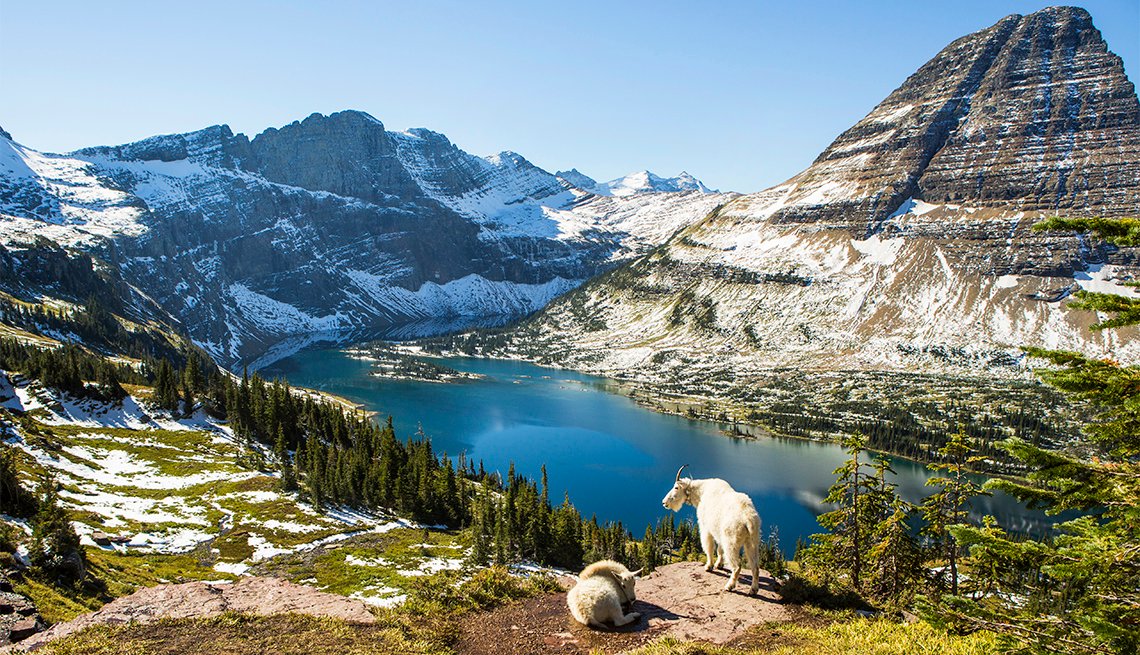
In addition to its amazing geological characteristics, it has a good deal of historical significance.
A 50-mile picturesque journey through the park, the Going-to-the-Sun Road is an engineering wonder and a National Historic Landmark that provides access to well-liked hiking paths and breathtaking views. In addition, the Great Northern Railway built a large number of the park’s lodges, chalets, and hotels in the early 20th century, and these buildings are included on the National Register of Historic Places. Do you want to go to a World Heritage Site designated by UNESCO? This is also the location of the Waterton-Glacier International Peace Park.
A paid admission system will be in place for some park entries through September 6, 2021, in an effort to reduce the number of visitors to Glacier National Park. For further details, go to the National Park Service website.
2. Zion National Park:
- Location: Utah.
- Highlights: Red sandstone cliffs, diverse landscapes, shuttle service for easy access to trailheads.
- Must-Do Hikes: The Narrows, Angels Landing, Kolob Canyons.
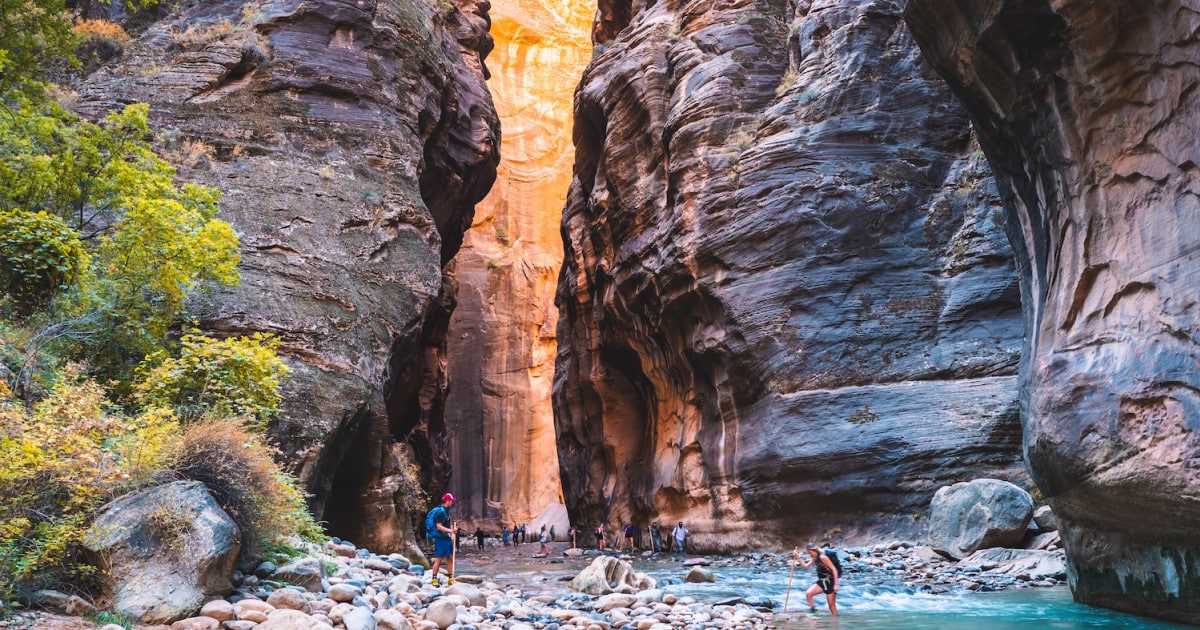
The 166-mile travel from Las Vegas or the 308-mile drive from Salt Lake City provides you with ample time to absorb the breathtaking scenery before returning to reality when it’s time to leave the refuge.
3. Grand Teton National Park:
- Location: Jackson Hole, Wyoming.
- Highlights: Teton Range, stunning views, over 200 miles of trails, abundant wildlife.
- Must-Do Hikes: Cascade Canyon, Jenny Lake, Taggart Lake.
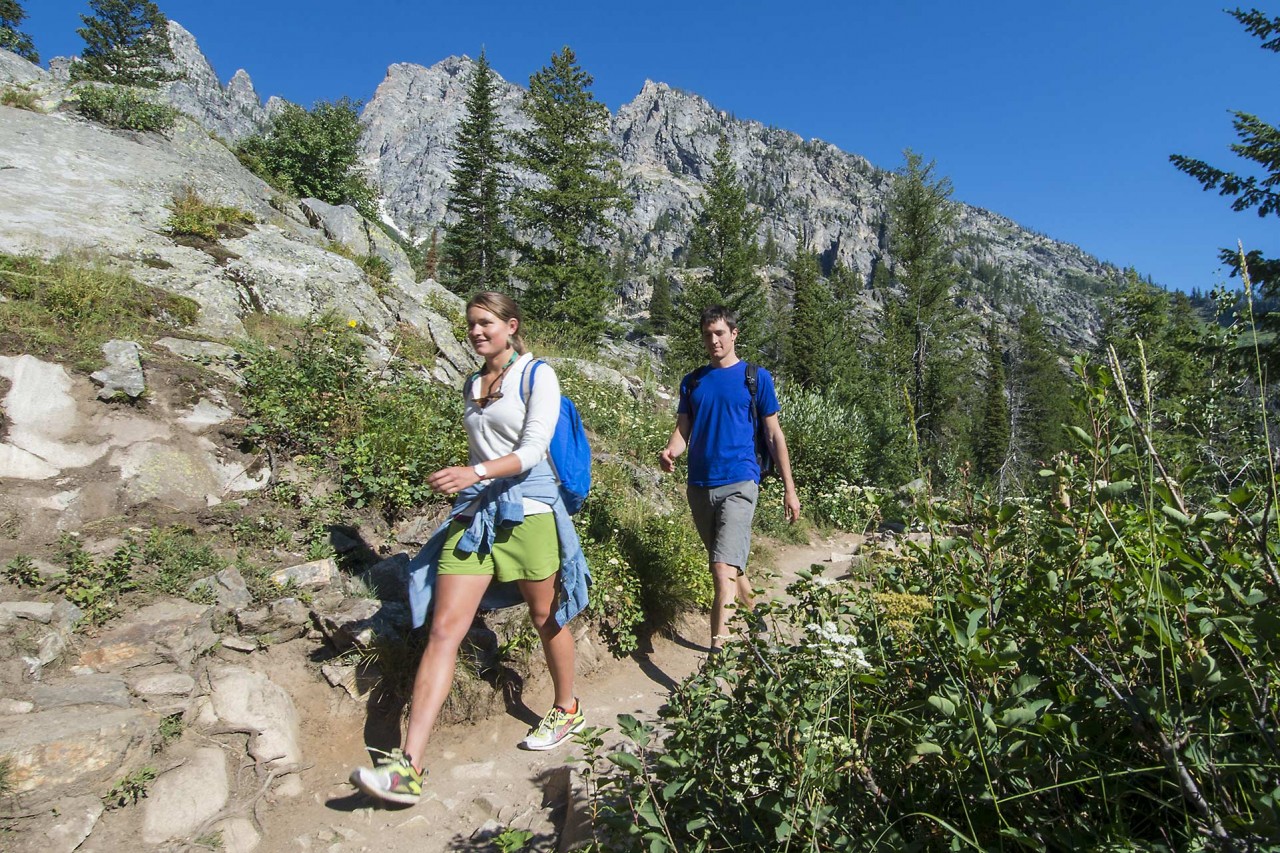
Along with a variety of species, the almost 500 square mile park is home to black bears, grizzlies, moose, antelope, and bison. In addition, tourists in the fall may see the park illuminated by golden aspens. A few miles north of Grand Teton is Yellowstone, another national park that visitors may visit to complete their holiday itinerary.
4. Mammoth Lakes:
- Location: Eastern Sierra, California.
- Highlights: 300+ miles of trails, granite peaks, alpine lakes, and access to Pacific Crest Trail.
- Must-Do Hikes: Crystal Lake Trail, Devils Postpile National Monument.
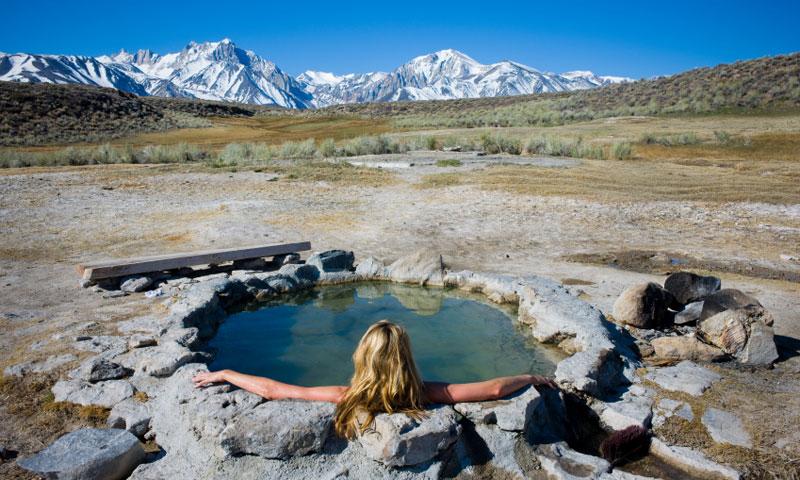
With a lengthy ski season, this town in the Eastern Sierra of California attracts adventure seekers, but its more than 300 miles of trails winding through granite peaks, forests, and alpine lakes are just as stimulating. A modest climb on the Crystal Lake Trail that offers sweeping vistas of the Mammoth Lakes Basin is an absolute must. Meanwhile, access to the Pacific Crest Trail—a hike that many trekkers consider a dream come true—can be had by visiting the Devil’s Postpile National Monument. Moreover, Mammoth Lakes is close to some of the greatest hot springs in California, so you can reward yourself with a well-earned bath after a strenuous day of hiking.
5. Yosemite National Park:
- Location: Central California.
- Highlights: Iconic trails, wildflowers, sequoias, rock formations.
- Must-Do Hikes: Half Dome Trail, Four Mile Trail, Swinging Bridge Trail.
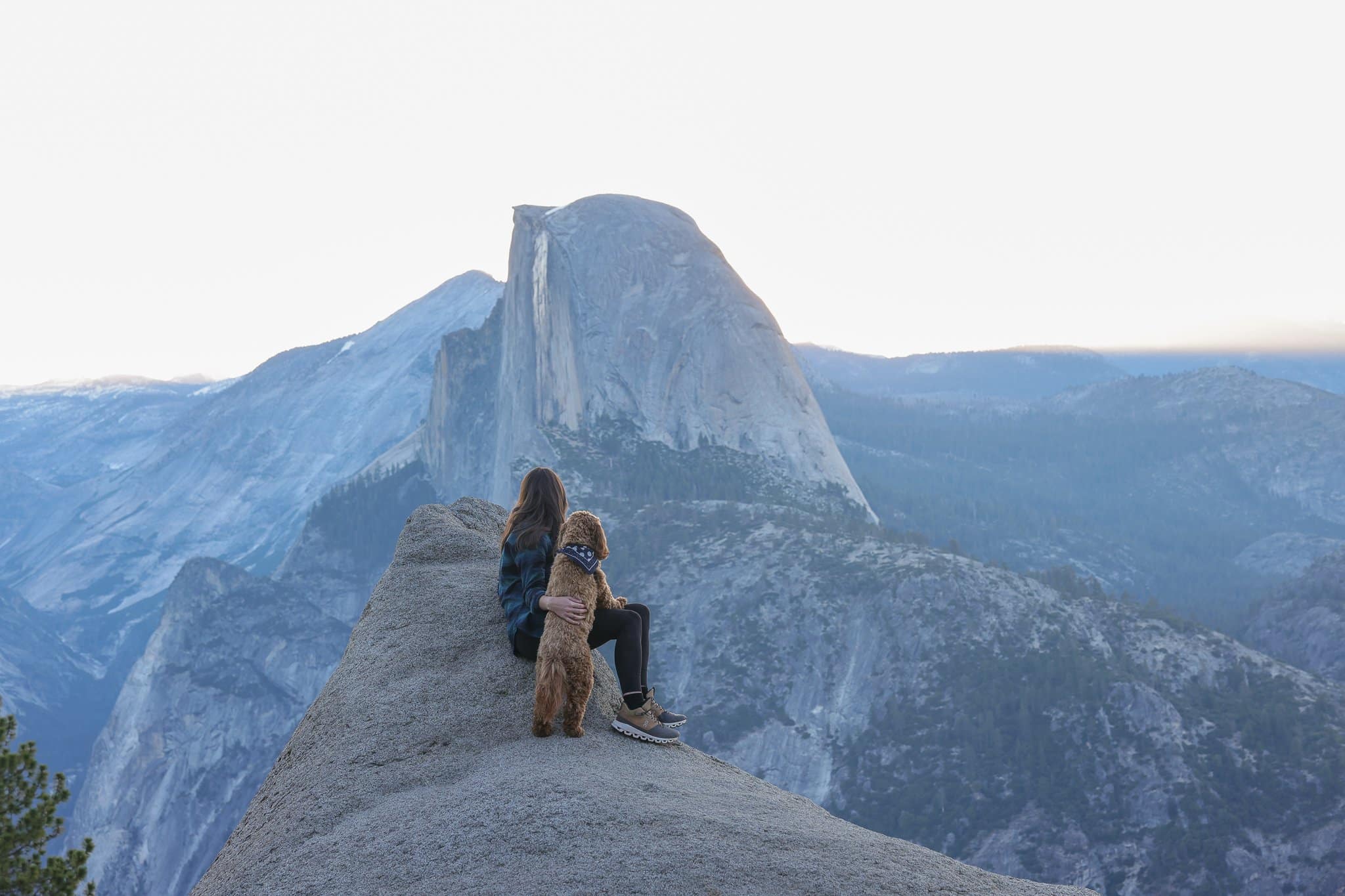
Yosemite is a hiker’s paradise even for novices: Local adventure outfitters (like those on our list of the finest California tours) provide climbing classes and guided excursions. Just don’t count on having the experience by yourself.
With over 4 million visitors annually, Yosemite’s crowds are the main hindrance to a fun trip, much like so many other American tourist spots. However, if you go at the correct time (and get up a bit early in the morning), Mother Nature’s wonders will magically and peacefully show themselves to you.
6. Rocky Mountain National Park:
- Location: Colorado.
- Highlights: 350+ miles of trails, diverse wildlife, Longs Peak for 14er enthusiasts.
- Must-Do Hikes: Emerald Lake Trail, Ute Trail.
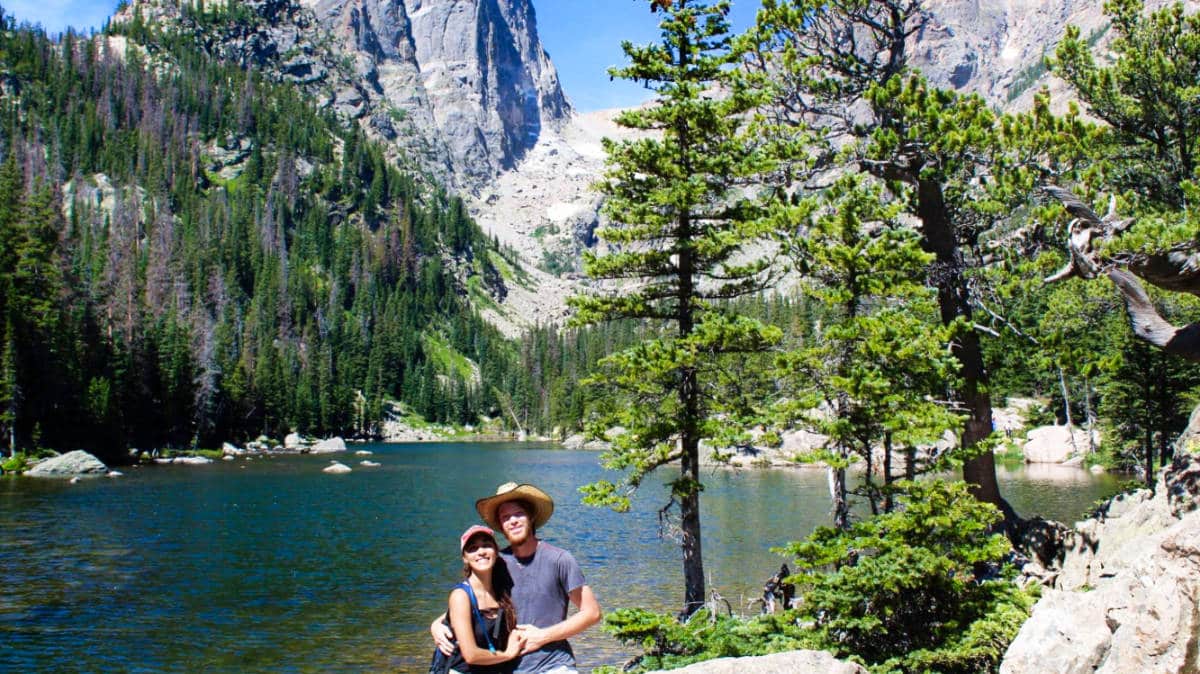
When it’s time to return to Earth—or at least to 7,500 feet—guests may indulge in some locally produced ice cream, explore the Stanley Hotel in a creepy manner, or just stroll through the charming community of Estes Park. Moreover, Boulder and Denver, two of the most popular cities in neighboring Colorado, are also a short drive away.
7. Grand Canyon National Park:
- Location: Arizona.
- Highlights: Vast size, diverse trails, panoramic views.
- Must-Do Hikes: Bright Angel Trail, North Kaibab Trail, Rim Trail.
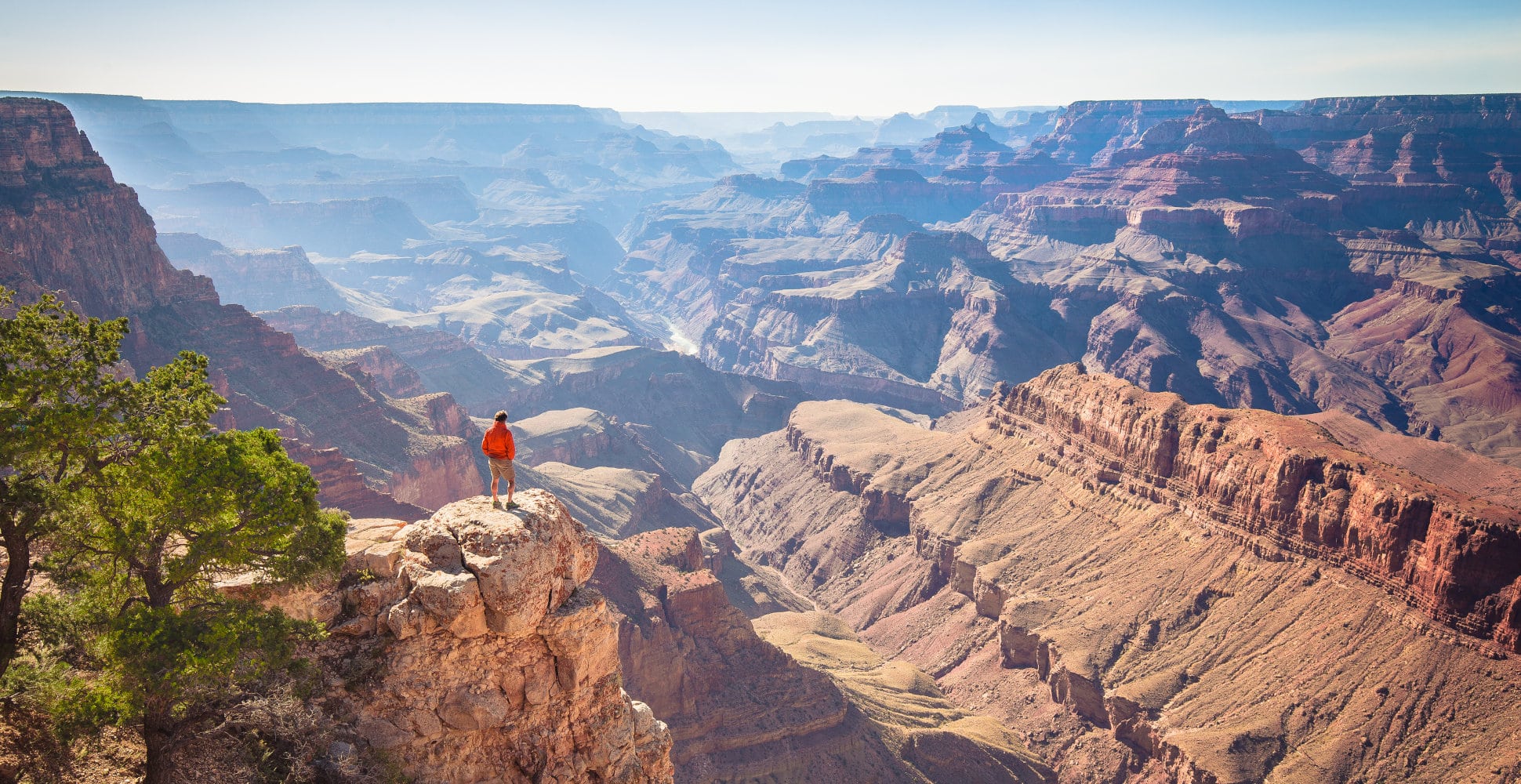
But be ready if you’re looking for a remote getaway to Mother Nature: It becomes really congested in the Grand Canyon. The Grand Canyon Village and the well-trod Bright Angel Trail are located on the South Rim, which is especially well-liked by tourists and hikers. Most of the facilities are located on this side. Visit the North Rim if you want to get away from the throng. Hardcore trekking and backcountry camping are best done here. A helicopter tour of the canyon is a great way to obtain a unique perspective.
8. Pisgah National Forest:
- Location: Western North Carolina.
- Highlights: Wildflowers, blueberries, gorges, waterfalls, Appalachian Trail.
- Must-Do Hikes: Looking Glass Rock Trail, Max Patch Trail.
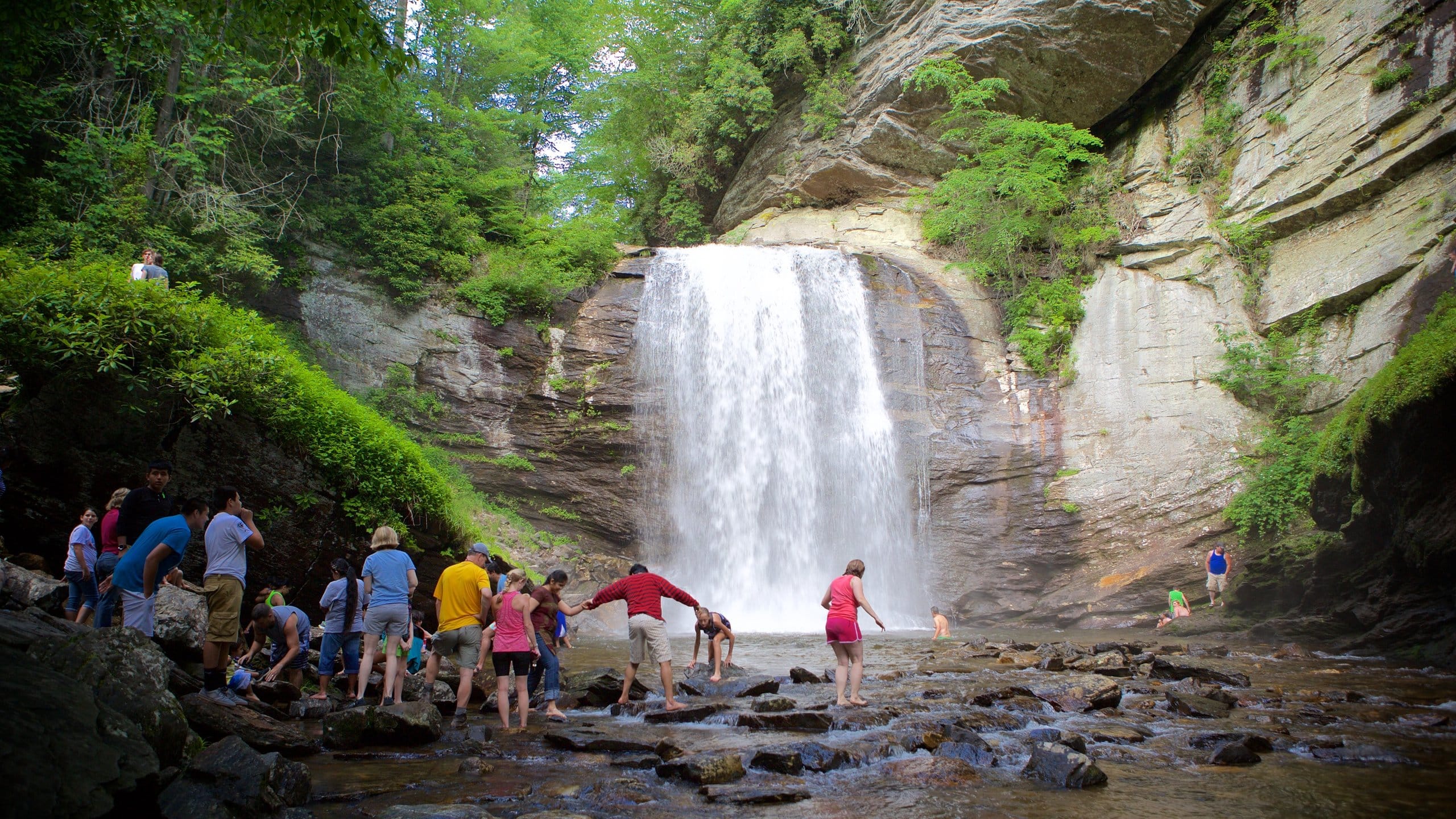 Because of its enduring beauty, hikers flock to this huge woodland in western North Carolina. The Pisgah National Forest may be blanketed in fall foliage, sprinkled with wildflowers, or bursting with wild blueberries, depending on the season. Some trails take hikers to gorges and waterfalls, while others, like the Looking Glass Rock Trail, provide breathtaking vistas of the Blue Ridge Mountains. This woodland is also traversed by the Appalachian Trail, so hikers can follow this famous path on paths like the short but equally picturesque Max Patch Trail. Additionally, visitors may make use of first-rate amenities due to Pisgah National Forest’s close proximity to Asheville.
Because of its enduring beauty, hikers flock to this huge woodland in western North Carolina. The Pisgah National Forest may be blanketed in fall foliage, sprinkled with wildflowers, or bursting with wild blueberries, depending on the season. Some trails take hikers to gorges and waterfalls, while others, like the Looking Glass Rock Trail, provide breathtaking vistas of the Blue Ridge Mountains. This woodland is also traversed by the Appalachian Trail, so hikers can follow this famous path on paths like the short but equally picturesque Max Patch Trail. Additionally, visitors may make use of first-rate amenities due to Pisgah National Forest’s close proximity to Asheville.
9. Olympic National Park:
- Location: Olympic Peninsula, Washington.
- Highlights: Rainforests, glaciers, coastline, diverse wildlife.
- Must-Do Hikes: Hoh Rain Forest’s Hall of Mosses Trail, Hurricane Ridge.
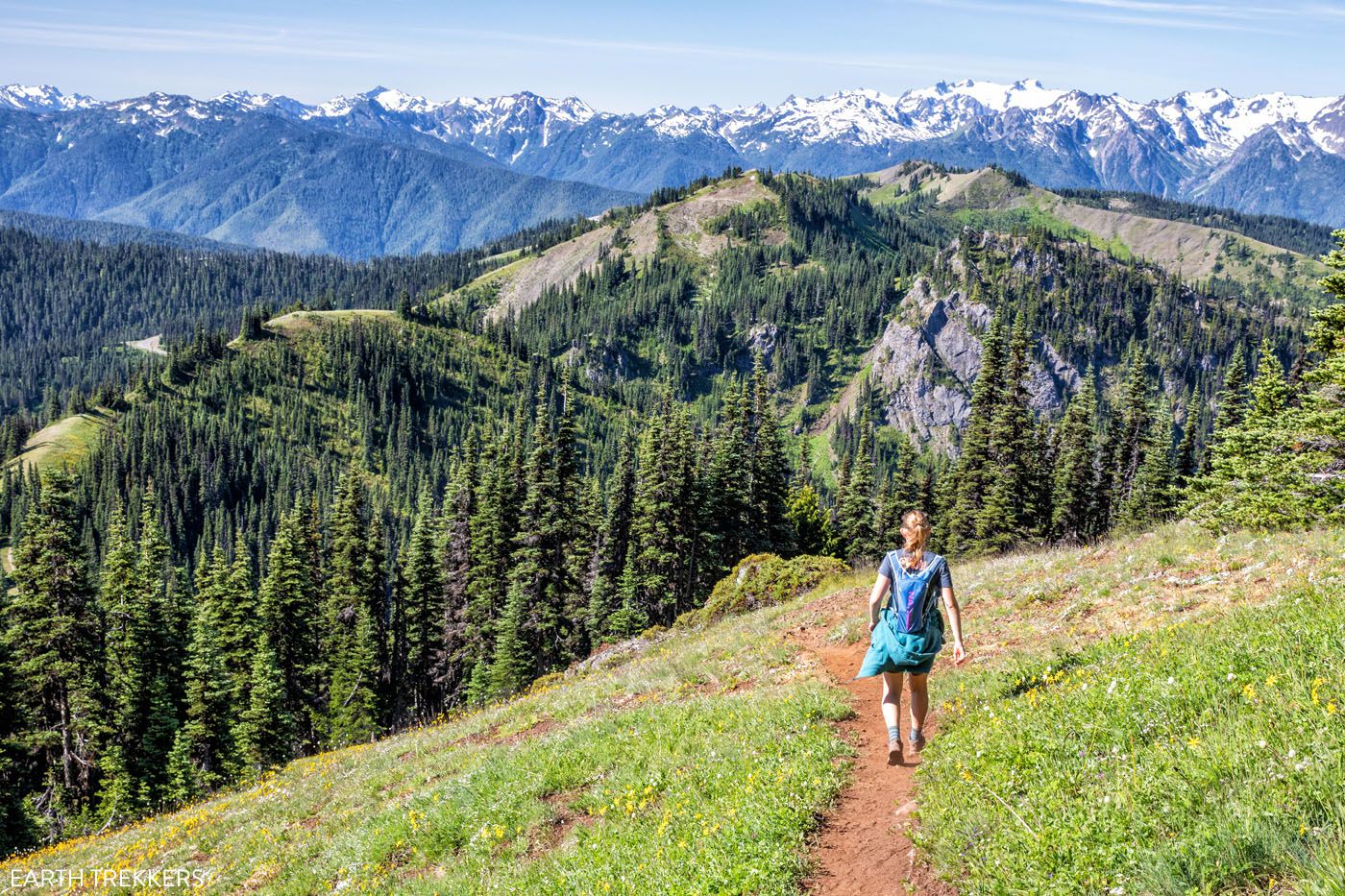 The Olympic Peninsula in Washington State is home to the Olympic National Park, which has activities for all types of nature enthusiasts, including hiking, stargazing, boating, and photography. Visitors may explore glacier-capped mountains, hike through old-growth temperate rainforests, and take in the breathtaking views of more than 70 kilometers of untamed coastline inside its almost one million acres.
The Olympic Peninsula in Washington State is home to the Olympic National Park, which has activities for all types of nature enthusiasts, including hiking, stargazing, boating, and photography. Visitors may explore glacier-capped mountains, hike through old-growth temperate rainforests, and take in the breathtaking views of more than 70 kilometers of untamed coastline inside its almost one million acres.
President Grover Cleveland established the Olympic Forest Reserve in 1897 in response to mounting worries about the area’s vanishing woodlands. This marked the park’s founding. President Theodore Roosevelt established further safeguards in 1909 when, in reaction to the Roosevelt Elk population’s decline, he declared a portion of the reserve to be the Mount Olympus National Monument. Thanks to President Franklin D. Roosevelt, it wasn’t until 1938 that it was formally designated as a national park. The park is now recognized as an International Biosphere Reserve and a World Heritage Site.
10. Pictured Rocks National Lakeshore:
- Location: Southern shore of Lake Superior, Michigan. –
- Highlights: 100 miles of trails, sandy beaches, sandstone cliffs, waterfalls.
- Must-Do Hikes: Chapel Loop, Sable Falls Trail.
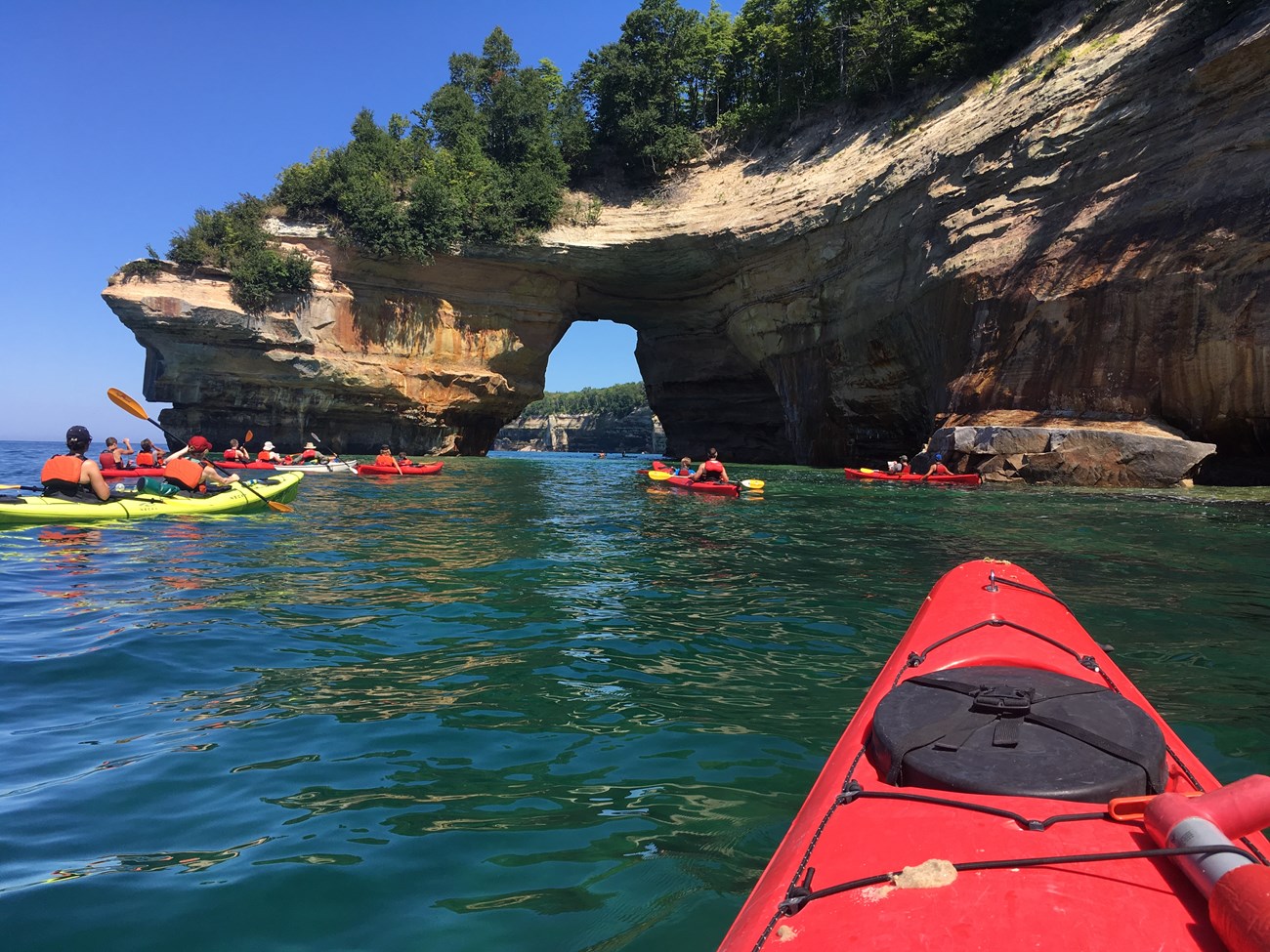 Situated on the southern side of Lake Superior, Pictured Rocks National Lakeshore is one of the best places to visit in Michigan. There are one hundred kilometers of routes to choose from, spanning from sandstone cliffs to sandy beaches. A well-liked 10-mile route, Chapel Loop offers vistas of the cliffs, many waterfalls, and a glimpse of the weather-sculpted Chapel Rock. Grand Sable Dunes in the park may be seen from the Sable Falls Trail in the interim. Although there’s never a bad time to visit Pictured Rocks, and winter offers thrilling ice climbing, April through November is the best time for hikers to avoid road closures and snow-covered paths.
Situated on the southern side of Lake Superior, Pictured Rocks National Lakeshore is one of the best places to visit in Michigan. There are one hundred kilometers of routes to choose from, spanning from sandstone cliffs to sandy beaches. A well-liked 10-mile route, Chapel Loop offers vistas of the cliffs, many waterfalls, and a glimpse of the weather-sculpted Chapel Rock. Grand Sable Dunes in the park may be seen from the Sable Falls Trail in the interim. Although there’s never a bad time to visit Pictured Rocks, and winter offers thrilling ice climbing, April through November is the best time for hikers to avoid road closures and snow-covered paths.
11. Acadia National Park:
- Location: Maine.
- Highlights: Rocky coastline, summit hikes, Cadillac North Ridge Trail.
- Must-Do Hikes: Beehive Loop, Jordan Pond Path.
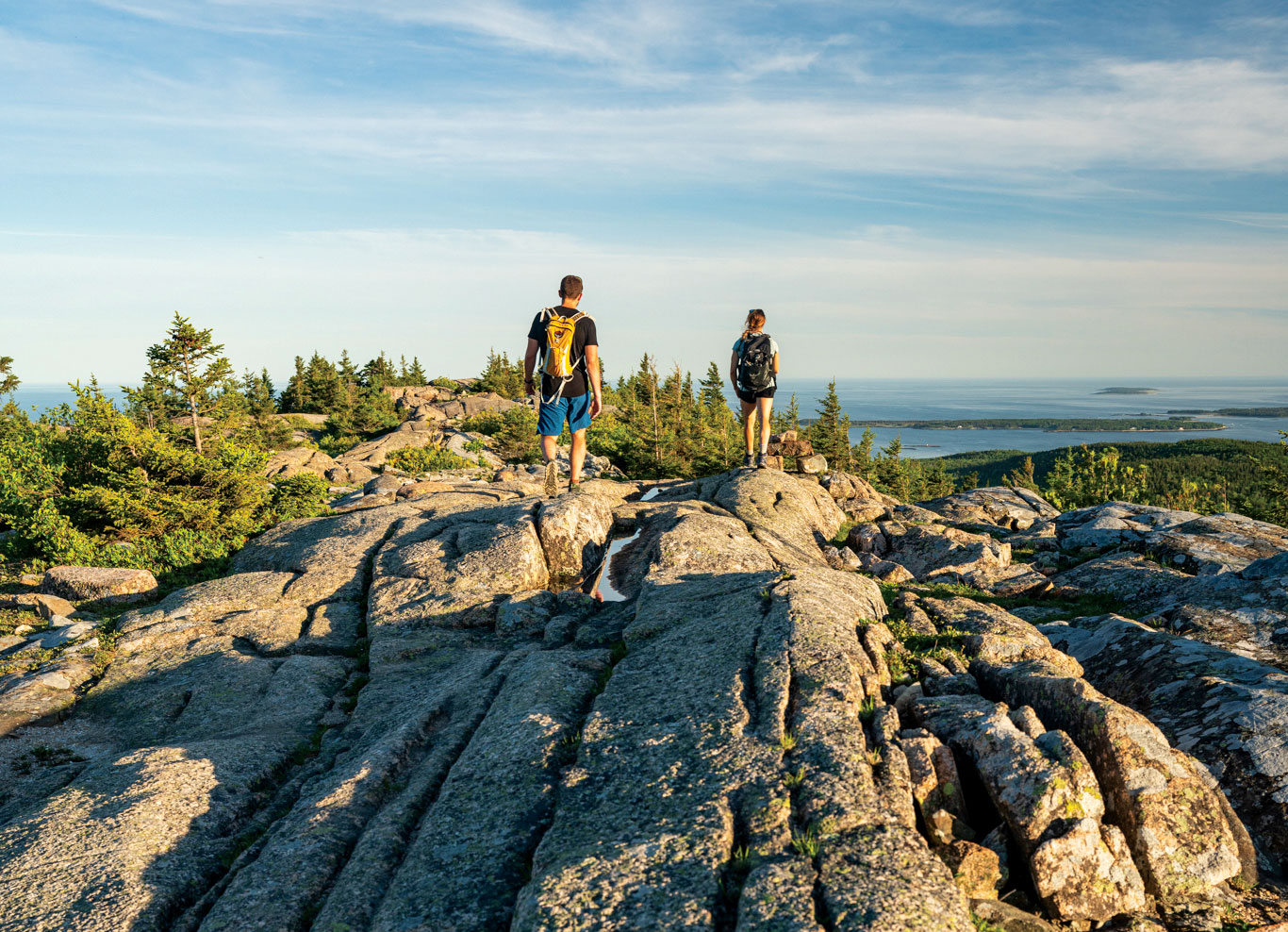 When you take a vacation at Acadia National Park, you become a pioneer: Every route leads to untamed, rocky terrain that is simply begging to be photographed with your camera. The spruce trees that protrude from the shoreline are crowned with jagged granite slabs over which cobalt waves pound. Off the coast, harbor seals bask on discarded pieces of bedrock while peregrine falcons soar overhead, menacing you from above. Inland forests and ponds are encircled by rocky pathways and charming carriage routes that demand to be explored. The park is undoubtedly for the average outdoor enthusiast, with a strong emphasis on heart-pounding pursuits like rock climbing, bicycling, horseback riding, and hiking.
When you take a vacation at Acadia National Park, you become a pioneer: Every route leads to untamed, rocky terrain that is simply begging to be photographed with your camera. The spruce trees that protrude from the shoreline are crowned with jagged granite slabs over which cobalt waves pound. Off the coast, harbor seals bask on discarded pieces of bedrock while peregrine falcons soar overhead, menacing you from above. Inland forests and ponds are encircled by rocky pathways and charming carriage routes that demand to be explored. The park is undoubtedly for the average outdoor enthusiast, with a strong emphasis on heart-pounding pursuits like rock climbing, bicycling, horseback riding, and hiking.
You may freely roam Acadia’s more than 47,000 acres, with all of its hiking paths and natural wonders, for a relatively reasonable charge. The charming New England village of Bar Harbor, Maine, is waiting for you in the northeastern corner of Mount Desert Island when you need a respite from the great outdoors.
12. Lake Tahoe:
- Location: California and Nevada.
- Highlights: Tahoe Rim Trail, panoramic views.
- Must-Do Hikes: Eagle Rock, Mount Tallac Trail.
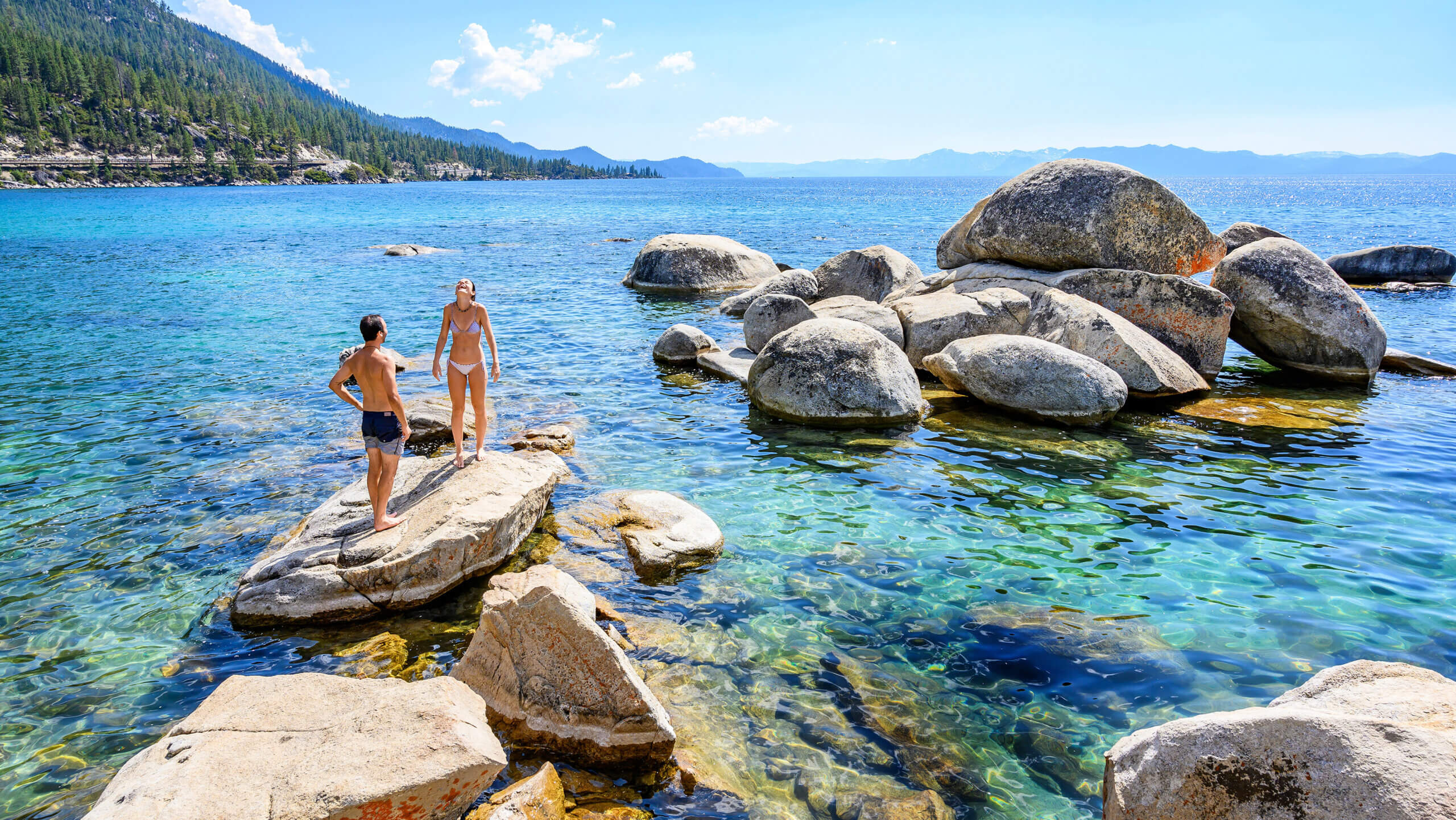 Amazing, remarkable, and mind-blowing You will struggle to find enough words to describe the breathtaking splendor of Lake Tahoe. Situated at the boundary of California and Nevada, Lake Tahoe has been a popular holiday destination for many years, drawing in over 15 million tourists annually. The soaring mountaintops and sheer granite cliff faces of Lake Tahoe, together with its pristine waters, have made it a popular destination for tourists, earning it the title of one of America’s most picturesque bodies of water. The surrounding area, often known as Lake Tahoe, has miles of hiking trails, hundreds of picture-perfect panoramas, and some of the greatest skiing in North America, but the gorgeous blue lake alone is reason enough to visit.
Amazing, remarkable, and mind-blowing You will struggle to find enough words to describe the breathtaking splendor of Lake Tahoe. Situated at the boundary of California and Nevada, Lake Tahoe has been a popular holiday destination for many years, drawing in over 15 million tourists annually. The soaring mountaintops and sheer granite cliff faces of Lake Tahoe, together with its pristine waters, have made it a popular destination for tourists, earning it the title of one of America’s most picturesque bodies of water. The surrounding area, often known as Lake Tahoe, has miles of hiking trails, hundreds of picture-perfect panoramas, and some of the greatest skiing in North America, but the gorgeous blue lake alone is reason enough to visit.
13. Big Sur:
Location: Central California coastline.
Highlights: Scenic state parks, sandstone cliffs, waterfalls.
Must-Do Hikes: Julia Pfeiffer Burns State Park, Andrew Molera State Park.
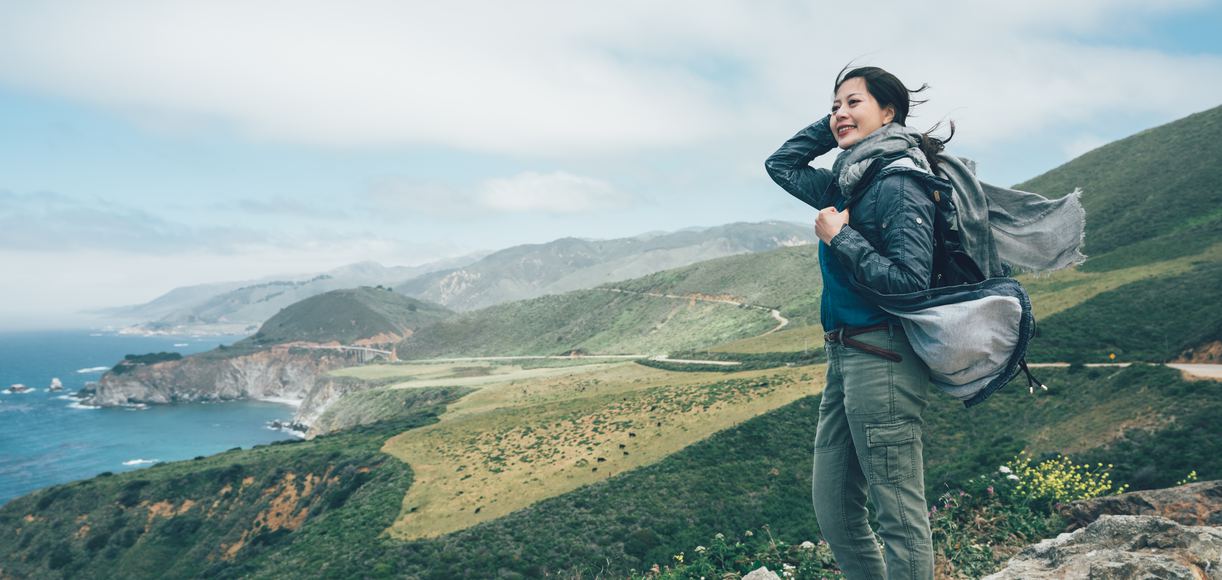 Big Sur is a way of thinking, not just a place to go. Big Sur, which stretches 90 miles along the central Californian west coast between Monterey Bay and San Simeon, is a place where travelers are urged to shift gears—literally and metaphorically—by its secluded setting, serene environment, and unparalleled beauty. The primary route across the area and the most picturesque stretch of road in Big Sur is the Pacific Coast Highway, which was constructed less than a century ago. The roadway offers breathtaking vistas as it winds in and out of the apparently unending coastline while perched high above the waves and clinging to the edge of the local cliffs.
Big Sur is a way of thinking, not just a place to go. Big Sur, which stretches 90 miles along the central Californian west coast between Monterey Bay and San Simeon, is a place where travelers are urged to shift gears—literally and metaphorically—by its secluded setting, serene environment, and unparalleled beauty. The primary route across the area and the most picturesque stretch of road in Big Sur is the Pacific Coast Highway, which was constructed less than a century ago. The roadway offers breathtaking vistas as it winds in and out of the apparently unending coastline while perched high above the waves and clinging to the edge of the local cliffs.
Despite the challenging driving conditions, Big Sur’s serene atmosphere is infectious and has drawn thinkers from all walks of life who are looking for change, inspiration, or safety. The story of Jack Kerouac’s journey to Big Sur in pursuit of inner peace is told in his book “Big Sur.” Henry Miller, a fellow writer, described Big Sur as the first location in America where he felt completely at home. He went on to write the book “Big Sur and the Oranges of Hieronymus Bosch.” Travelers claim Big Sur’s majesty is still unfathomable, despite the fact that innumerable singers, painters, authors, and photographers have documented the area’s potent influence in their works since then.
Even though Big Sur receives millions of tourists each year, it still seems very much like a local community. Along the roadway are independent art galleries coexisting with restaurants perched on cliffs and wellness centers. However, the area’s varied terrain far outweighs all of its facilities, with state parks and beaches ranking as the top draws. There are wildflowers, wildlife, rivers, valleys, streams, coves, mountains, and beaches around every corner. Assuming you can locate them, anyhow.
A portion of Big Sur’s natural features are purposefully left unlabeled in order to maintain the area’s well-known sense of isolation. Unbelievably, there are still some places without electricity. Big Sur, on the other hand, aims to offer more than simply your average holiday destination. So relax, take a seat, and let Big Sur’s sights and noises fill your senses.
14. Telluride:
- Location: Rocky Mountains, Colorado.
- Highlights: Diverse hiking routes, from moderate to challenging.
- Must-Do Hikes: Bear Creek Trail, Sneffels Highline Trail.
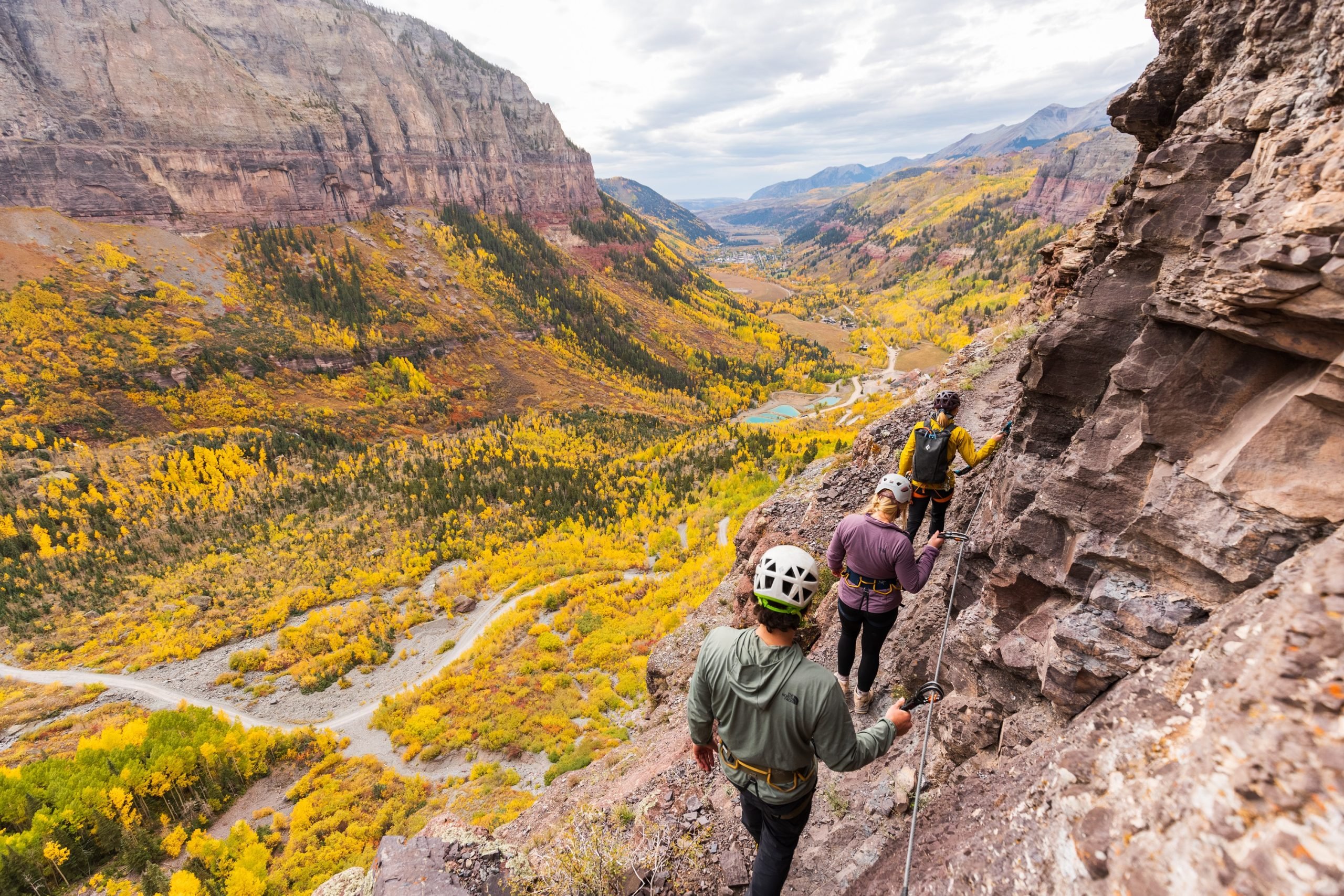 There are two main explanations regarding the origin of this Colorado village’s unusual moniker. First of all, the name Telluride is derived from the nonmetallic element “tellurium,” which frequently denotes the existence of gold reserves and attracted a large number of pioneers to the area. However, a lot of locals would tell you that the moniker is merely a more straightforward way of expressing “to hell you ride,” a clever way of highlighting the excellent ski slopes that draw a lot of winter tourists each year. Powder lovers will discover more than 2,000 skiable acres that are suitable for beginners, specialists, and all skill levels. “To hell, you ride” also alludes to the wild environment of the area.
There are two main explanations regarding the origin of this Colorado village’s unusual moniker. First of all, the name Telluride is derived from the nonmetallic element “tellurium,” which frequently denotes the existence of gold reserves and attracted a large number of pioneers to the area. However, a lot of locals would tell you that the moniker is merely a more straightforward way of expressing “to hell you ride,” a clever way of highlighting the excellent ski slopes that draw a lot of winter tourists each year. Powder lovers will discover more than 2,000 skiable acres that are suitable for beginners, specialists, and all skill levels. “To hell, you ride” also alludes to the wild environment of the area.
Every week, locals and tourists alike congregate for a foot-stomping good time in Town Park or in Telluride’s pubs. Ultimately, the significance of the name is insignificant; what matters most is the amazing time you will undoubtedly have here.
15. Hawaii – The Big Island:
- Location: Hawaii.
- Highlights: Volcanic landscapes, Kilauea Iki Trail, coastal hikes.
- Must-Do Hikes: Kilauea Iki Trail, Makalawena Beach.
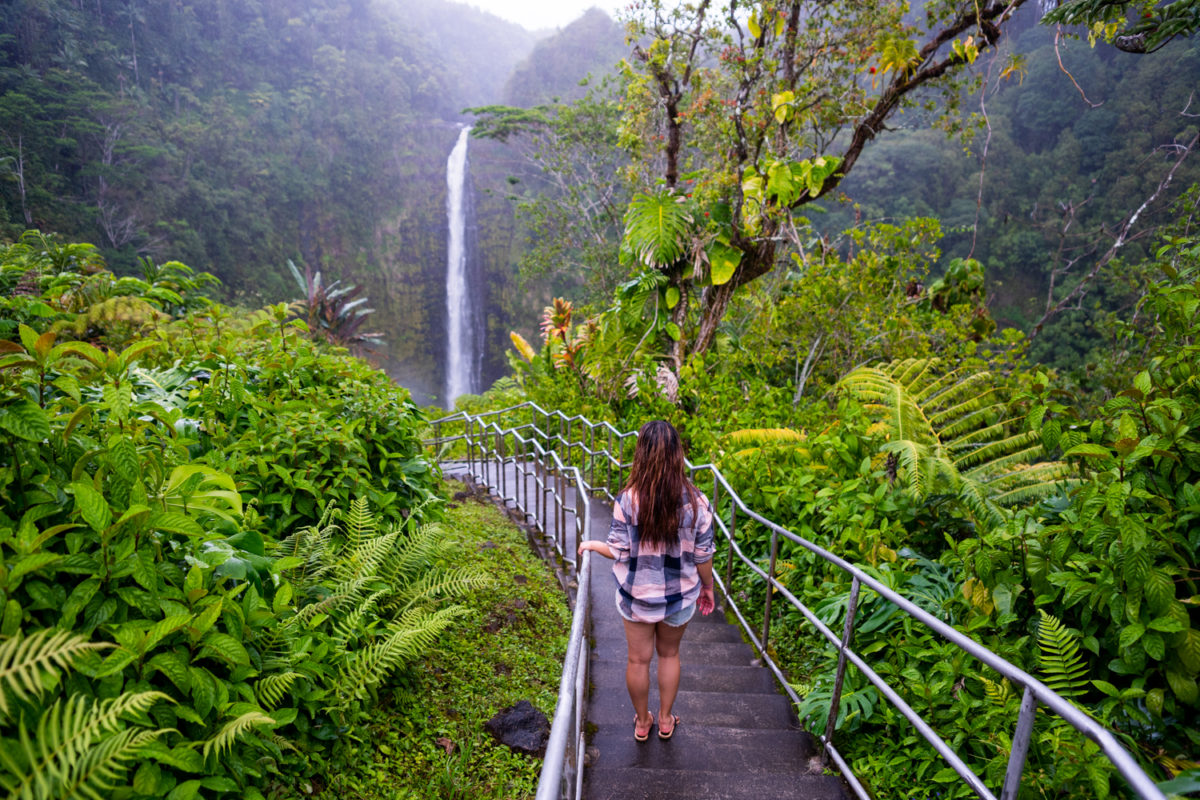 Geographically singular, the island of Hawai’i, sometimes referred to as the Big Island, offers a wide variety of landscape features, from steaming, lush jungles to hardened lava deserts and snow-covered summits. It is still expanding. Since 1983, Hawai’i’s most powerful feature—the eruptive, active Kilauea volcano—has been expanding the island’s landmass. Volcanic activity resulted in earthquakes, crater collapse, and eruptions during the most recent eruption in May 2018. It’s true that you’ve definitely missed the target if you came expecting a traditional Hawaiian break complete with luaus and a honeymoon-style vibe.
Geographically singular, the island of Hawai’i, sometimes referred to as the Big Island, offers a wide variety of landscape features, from steaming, lush jungles to hardened lava deserts and snow-covered summits. It is still expanding. Since 1983, Hawai’i’s most powerful feature—the eruptive, active Kilauea volcano—has been expanding the island’s landmass. Volcanic activity resulted in earthquakes, crater collapse, and eruptions during the most recent eruption in May 2018. It’s true that you’ve definitely missed the target if you came expecting a traditional Hawaiian break complete with luaus and a honeymoon-style vibe.
However, this area’s state parks and hiking trails are home to scenery that no other Hawaiian island can match. You’ve probably never seen the hues of the beaches before. If your time on the island is limited, consider enrolling in one of the top Hawaii tours to benefit from the knowledge of a knowledgeable native.
16. Adirondacks:
- Location: Upstate New York.
- Highlights: 2,000+ miles of trails, Adirondack High Peaks, pristine nature paths.
- Must-Do Hikes: Baker Mountain, Indian Head Trail.
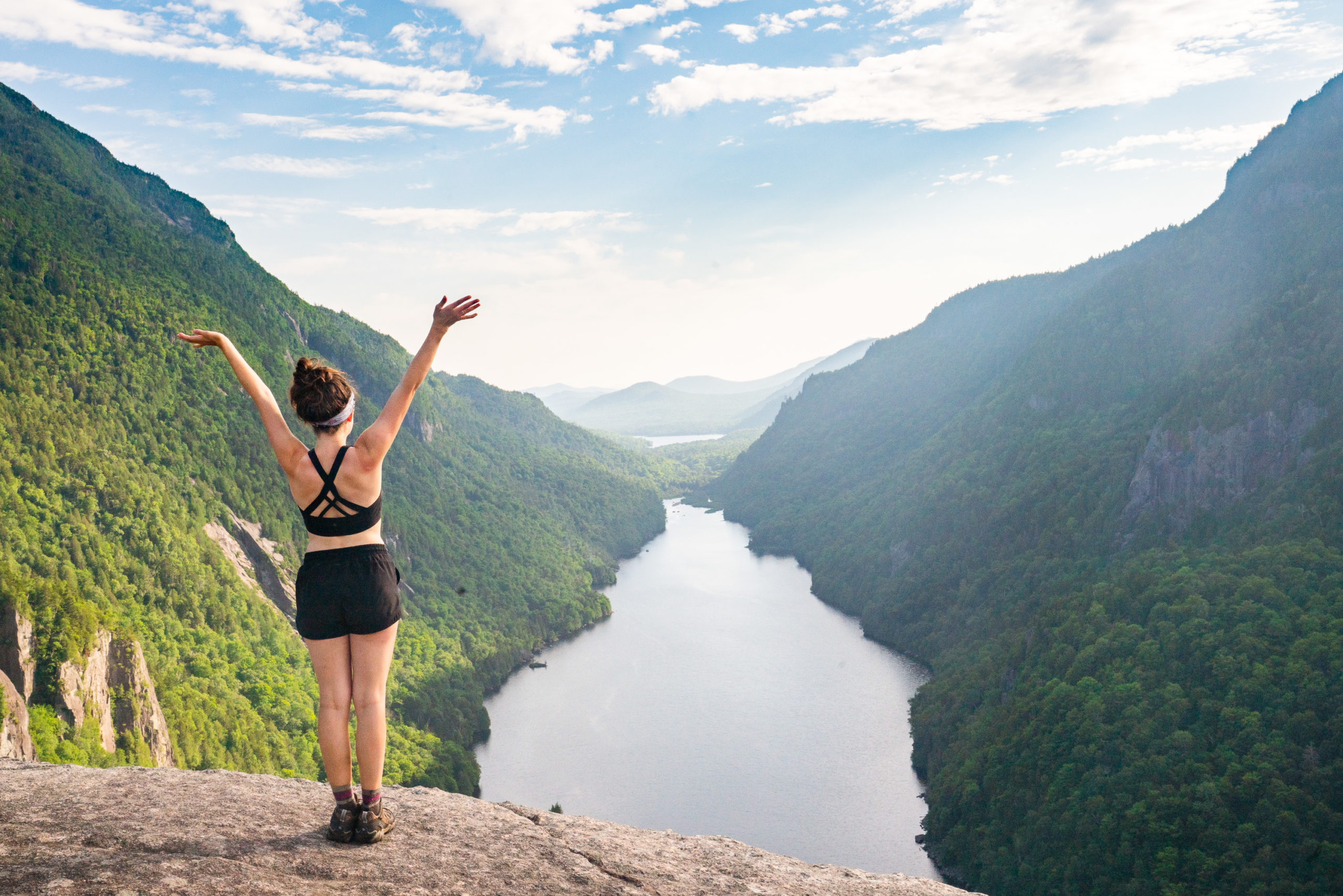 I think you’ll love the Adirondack region of northern New York, whether you’re into sports history, outdoor activities, or just stunning landscape. The Adirondacks provide a pleasant diversion from the region’s busy metropolises. They are located around 290 miles north of New York City, 250 miles northwest of Boston, and 110 miles south of Montreal. Visitors may engage in a variety of outdoor winter sports, such as dog sledding, bobsledding, skiing, and snowshoeing. When summer arrives, visitors may go whitewater rafting, biking, fishing, hiking, and canoeing. With more than 6 million acres scattered over 12 areas, you’ll have your choice of breathtaking landscapes to explore year-round, including Lake Placid, Saranac Lake, and Tupper Lake.
I think you’ll love the Adirondack region of northern New York, whether you’re into sports history, outdoor activities, or just stunning landscape. The Adirondacks provide a pleasant diversion from the region’s busy metropolises. They are located around 290 miles north of New York City, 250 miles northwest of Boston, and 110 miles south of Montreal. Visitors may engage in a variety of outdoor winter sports, such as dog sledding, bobsledding, skiing, and snowshoeing. When summer arrives, visitors may go whitewater rafting, biking, fishing, hiking, and canoeing. With more than 6 million acres scattered over 12 areas, you’ll have your choice of breathtaking landscapes to explore year-round, including Lake Placid, Saranac Lake, and Tupper Lake.
You’re in luck if you’re hoping to take a break from the outdoor activities offered by the Adirondacks: this hilly region is home to a wealth of historical artifacts. Explore the Olympic Jumping Complex, the Olympic Sports Complex, and the Lake Placid Olympic Museum to get a taste of everything Olympic in Lake Placid. In addition, the cemetery and former residence of abolitionist John Brown, John Brown Farm State Historic Site, is worth seeing if sports history isn’t your thing. Extras include a range of seasonal activities, upscale eating establishments, boutique stores, and gastropubs with an Adirondack theme. When it’s time to head home for the night, there are plenty of lodging alternatives available, from elegant resorts and lavish cabins to classic campsites and charming bed-and-breakfasts.
These destinations offer a wide range of experiences, from challenging summit hikes to leisurely walks through pristine forests and along picturesque coastlines. Whether you’re an avid hiker or a nature enthusiast, these hiking spots in the USA have something special to offer.
Summary Best Trails to Hike in the US for all Skill Levels
Here is a summary of a list of the top US treks for hikers of all skill levels, including destinations from coast to coast. There is something here for everyone, whether they are searching for a weekend getaway, a day trip, or a long-term journey lasting six months.
Easy Hiking Destinations in the US
- Big Sur – Situated in California, perfect for seeing redwoods on short trails
- Sedona – located in Arizona, great for desert-loving hikers
Moderate Hiking Destinations in the US
- Superior Hiking Trail – located in Minnesota, best for a fantastic short thru-hike
- Bear Mountain – located in Upstate New York, best for an easy adventure near NYC
- Grand Staircase-Escalante National Monument – located in Utah, best for slot canyon adventures
- Laurel Highlands Hiking Trail – located in Pennsylvania, best for family-friendly trails
Difficult Hiking Destinations in the US
- Appalachian Trail – located in multiple states in the East, best for hikers with many months in their hands
- Grand Canyon – located in Arizona, best for epic hiking challenges
- White Mountains – located in New Hampshire, best for hikers ready for rugged terrain
All-round Hiking Destinations in the US
- Yosemite National Park – located in California, it is perfect for hikers looking for iconic views and a wide range of hikes.
The United States boasts some of the most breathtaking and diverse landscapes in the world, making it a hiker’s paradise. From coast to coast, there are numerous national parks, forests, and wilderness areas that offer an array of hiking opportunities.
![]()

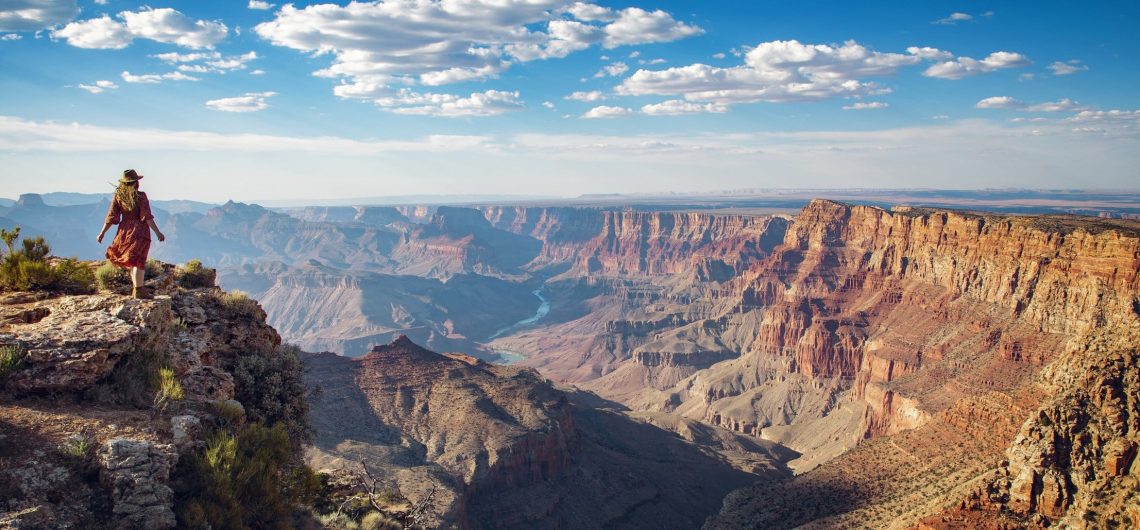
Comments